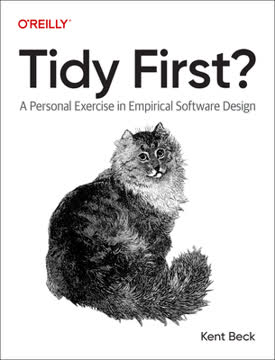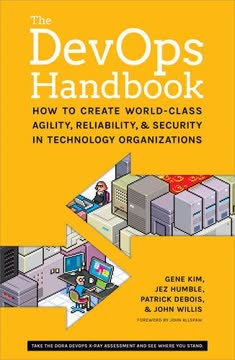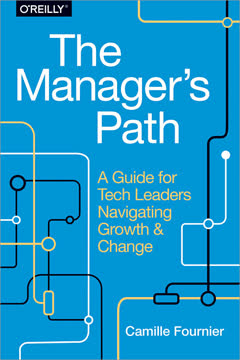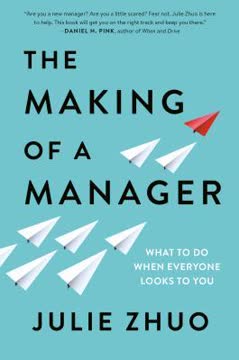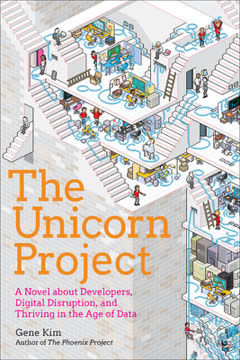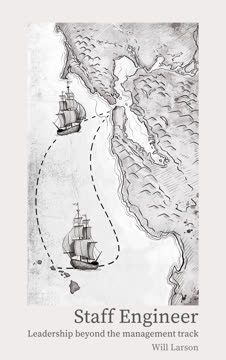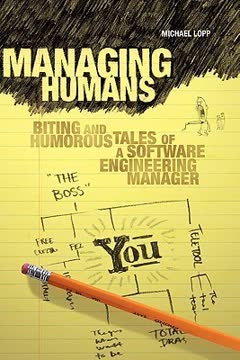重点摘要
1. 通过理解人类的怪癖和动机掌握管理艺术
“在一对一会议中,你的工作是让最微小的声音也有机会被听到,我通常会以一个问题开始:‘你好吗?’”
了解你的团队。 作为经理,你的首要责任是了解和支持团队中的每一个人。这包括识别他们独特的个性、工作风格和动机。定期的一对一会议对于建立关系和收集见解至关重要。
量身定制你的方法。 不同的团队成员需要不同的管理风格。有些人可能在自主性中茁壮成长,而另一些人则需要更多的指导。通过了解每个人的需求,你可以调整你的领导方法,以最大化他们的潜力和工作满意度。
培养心理安全感。 创造一个让团队成员感到舒适分享他们的想法、担忧和创意的环境。这种开放性会带来更好的问题解决、创新和整体团队表现。
2. 通过开放沟通和信任文化建设高绩效团队
“如果他们不信任你,他们什么都不会说,所以你什么也听不到。”
通过透明度建立信任。 对公司目标、挑战和决策过程保持开放。自由分享信息并鼓励你的团队也这样做。这种透明度建立了信任,并帮助团队成员感到对公司成功的投入。
鼓励多样化的观点。 积极寻求并重视团队内的不同观点。这种思想的多样性会带来更好的问题解决和创新。创造机会让所有团队成员贡献他们的想法和意见。
建设性地解决冲突。 当出现分歧时,及时且专业地解决它们。利用冲突作为改善沟通和加强团队关系的机会。
3. 在保持结构的同时拥抱软件开发的混乱
“过程在那些衡量和那些创造之间创造了一种美味的、健康的紧张关系。”
平衡灵活性和结构。 认识到软件开发本质上是混乱的,但结构对于生产力是必要的。实施轻量级的流程,提供指导而不压制创造力或敏捷性。
适应变化的环境。 准备好在项目发展和新挑战出现时调整你的方法。鼓励你的团队在面对变化时具有适应性和韧性。
培养持续改进的文化。 定期审查和改进你的流程,寻求团队成员的意见。鼓励实验并从成功和失败中学习。
4. 识别和培养工程团队中的不同性格类型
“一个好的裁判知道会议远未达到预定议程,但房间里的每个人都表现出进展的非语言信号——所以随它去吧,看看会发生什么。”
识别关键性格类型。 识别常见的工程师性格类型,例如:
- 完美主义者:追求完美的代码,但可能在截止日期上挣扎
- 创新者:产生创造性的解决方案,但可能抵制既定流程
- 工作狂:可靠地完成任务,但可能缺乏主动性
利用优势并减轻劣势。 分配任务和角色以发挥每个团队成员的优势。提供支持和指导,帮助个人克服他们的弱点。
促进不同性格之间的合作。 鼓励不同性格类型之间的团队合作,以促进创造力和平衡。创造知识共享和团队内指导的机会。
5. 以战略技巧应对组织政治和变革
“重组影响整个公司。每个人都有意见,这意味着你不熟悉的群体思维。”
了解政治环境。 识别组织内的关键利益相关者、决策者和影响者。建立关系和联盟以支持你的团队目标和计划。
在变革期间有效沟通。 在重组或其他重大变革期间,向你的团队提供清晰、一致的沟通。及时且诚实地解决担忧,同时关注变革的积极方面。
成为变革的推动者。 将你自己和你的团队定位为组织变革的有价值贡献者。主动识别改进机会,并向领导层提出经过深思熟虑的建议。
6. 培养鼓励成长和创新的学习环境
“自从我写《书呆子手册》以来,我一直在强调系统思考者的观点,并在《成为极客》(O'Reilly, 2010)中进一步探讨。”
促进持续学习。 鼓励你的团队跟上新技术和行业趋势。提供专业发展的资源和机会,如培训、会议和指导计划。
培养实验文化。 为团队成员探索新想法和方法创造空间。鼓励有控制的冒险,并将失败视为学习机会而非挫折。
认可和奖励创新。 庆祝团队中的创造性解决方案和创新思维。实施一个分享和评估新想法的系统,并为有前途的计划提供支持。
7. 平衡技术专长与人员管理技能以实现有效领导
“作为经理,你的工作是将他的明显缺陷转化为优势,找到最合适的人来填补它,并信任他完成工作。”
保持技术熟练度。 参与技术讨论和决策,以保持在团队中的信誉。定期更新自己的技术技能,以了解团队面临的挑战。
发展强大的人员管理技能。 专注于提高你的情商、沟通和冲突解决能力。这些软技能对于有效领导和激励团队至关重要。
授权和赋能。 信任团队成员处理重要任务和决策。提供指导和支持,但避免微观管理。这种方法允许你专注于更高层次的领导职责,同时发展团队的技能和信心。
8. 实施有效的流程而不压制创造力和生产力
“拥抱他们实验的模糊性。允许他们实验并痴迷于一个迷人的项目只是游戏的一半。”
设计轻量级流程。 创建提供结构和指导而不过于繁琐的流程。专注于提高效率和质量的基本要素。
定期审查和改进。 不断评估你的流程,以确保它们保持有效和相关。寻求团队的意见,并愿意调整或取消不再有用的流程。
允许灵活性。 认识到不同的项目或团队成员可能需要流程的变化。在必要时愿意调整你的方法,以适应独特的情况或创造性的问题解决。
9. 以冷静和果断的行动处理危机和困难情况
“当天塌下来时,每个人都在看。每个人都想要一个小时前的状态。”
在压力下保持冷静。 你的举止为团队定下基调。即使在高压情况下,也要保持冷静和自信的态度。
快速收集信息。 通过收集相关事实和观点来评估情况。避免基于不完整信息做出仓促决定。
采取果断行动。 一旦你对问题有了清晰的理解,果断地采取行动来解决它。向团队和利益相关者清晰地传达你的计划,并定期更新进展情况。
10. 战略性地发展你的职业生涯,始终寻求新的挑战和机会
“如果你想让你的书呆子通过构建一些革命性的东西来震撼你的世界,你希望他们追求第二高峰。”
设定明确的职业目标。 定义你的长期职业抱负,并制定实现它们的计划。随着你的兴趣和情况的变化,定期重新评估和调整你的目标。
寻求多样化的经验。 承担新的挑战和责任,以拓宽你的技能和视野。这可能涉及横向移动或组织内的跨职能项目。
建立强大的职业网络。 与同事、导师和行业同行建立关系。这些联系可以在你的职业生涯中提供宝贵的见解、支持和机会。
最后更新日期:
FAQ
What's Managing Humans about?
- Focus on Management: Managing Humans by Michael Lopp delves into the complexities of managing software engineering teams, blending humor with real-life experiences to offer leadership insights.
- Semi-Fictional Stories: The book uses narratives inspired by Lopp's experiences at companies like Apple and Pinterest, illustrating management concepts through relatable characters and situations.
- Human-Centric Approach: Lopp stresses the importance of understanding and connecting with team members, emphasizing that successful management involves addressing the unique needs of individuals.
Why should I read Managing Humans?
- Practical Insights: The book provides actionable advice for both new and experienced managers, aiding them in navigating the challenges of leading technical teams.
- Engaging Style: Lopp's humorous and candid writing style makes complex management concepts accessible and enjoyable to read.
- Real-World Applications: Readers can apply lessons from Lopp's experiences to their own management practices, enhancing team dynamics and productivity.
What are the key takeaways of Managing Humans?
- Connection is Key: Great managers must connect with their team members to understand their motivations and needs.
- Embrace Complexity: Lopp encourages managers to embrace the chaotic nature of human interactions and to be flexible in their approaches.
- Communication Matters: Effective communication is crucial for successful management, with strategies provided for improving clarity and understanding within teams.
What are the best quotes from Managing Humans and what do they mean?
- "You must see the people who work with you.": Highlights the importance of recognizing and understanding individual team members to foster a supportive work environment.
- "Better is the enemy of done.": Warns against perfectionism, suggesting that striving for perfection can hinder progress and completion of projects.
- "Management is chess.": Compares management to chess, indicating that it requires strategic thinking and foresight to navigate complex organizational dynamics.
What is the "Rands Test" in Managing Humans?
- Assessment Tool: The Rands Test is a set of 11 questions designed to evaluate the health of a team and the effectiveness of communication within it.
- Focus on Clarity: Questions address whether team members have regular one-on-ones, understand company strategy, and feel comfortable expressing their thoughts.
- Actionable Insights: By answering these questions, managers can identify areas for improvement in team dynamics and communication practices.
How does Lopp define "Stables" and "Volatiles" in Managing Humans?
- Stables: Team members who prefer structure, process, and predictability, contributing to a stable work environment.
- Volatiles: Thrive on risk and disruption, often challenging the status quo and pushing for innovation, which can lead to conflict with Stables.
- Balancing Act: Both types are essential for a healthy team dynamic, and managers should encourage a balance between stability and innovation.
What is the significance of "The Hotel Giraffe" metaphor in Managing Humans?
- Unexpected Situations: Illustrates the absurdity of unexpected challenges in management, emphasizing the need for adaptability.
- Self-Reflection: Encourages managers to reflect on their stress levels and how they handle unexpected challenges.
- Awareness of Stress: The giraffe symbolizes the importance of recognizing when stress affects performance and addressing it proactively.
What does Lopp mean by "Management via Worry and Crisis"?
- Worry Management: Refers to managers who react to potential problems with excessive concern, leading to unproductive meetings.
- Crisis Management: Describes managers who thrive in crisis situations, using them to demonstrate their value, but warns against relying solely on crises for motivation.
- Balanced Approach: Advocates for a balanced approach where managers can be proactive rather than reactive, fostering a healthier work environment.
How does Lopp suggest handling "Information Starvation"?
- Information Conduit: Managers should act as conduits for information, ensuring team members receive necessary updates and context.
- Preventing Rumors: Open communication prevents the spread of rumors and misinformation arising from a lack of clarity.
- Regular Check-Ins: Emphasizes the importance of regular check-ins and updates to keep the team informed and engaged.
What is the "soak" method in Managing Humans?
- Definition of Soaking: Involves allowing your mind to ponder a problem over time, rather than rushing to a solution, leading to more creative outcomes.
- Active and Passive Soaking: Active soaking involves gathering information, while passive soaking lets your mind wander and make connections.
- Encouraging Original Thought: Aims to foster original thought and strategic decision-making by transforming emotional reactions into well-considered responses.
What is the "Nerd Attention Deficiency Disorder" (NADD) in Managing Humans?
- Definition of NADD: A humorous term describing the tendency of nerds to juggle multiple tasks and distractions simultaneously.
- Characteristics of NADD: Individuals thrive on rapid-fire content and multitasking, which can lead to both productivity and chaos.
- Managing NADD: Emphasizes creating environments that allow for focused work and occasional chaos, supporting team members effectively.
What are "incrementalists" and "completionists" in Managing Humans?
- Incrementalists: Focus on making steady progress and achieving short-term goals, prioritizing getting things done over perfection.
- Completionists: Strive for perfection and long-term solutions, driven by the desire to do things right, resisting quick fixes.
- Balancing Both Types: Having both types on a team leads to more effective problem-solving and innovation when managed well.
评论
《Managing Humans》获得了褒贬不一的评价,平均评分为3.93/5。读者们欣赏其对管理软件工程师的深刻建议和有趣的写作风格。许多人认为这本书对新经理很有帮助,并且对科技行业的人来说很有共鸣。然而,有些人批评它依赖于刻板印象和过时的观点。这本书以博客文章集的形式呈现,既因可读性高而受到赞扬,也因缺乏连贯性而受到批评。虽然一些读者强烈推荐这本书,但另一些人则认为它在硅谷以外或对非刻板印象的工程师来说不太适用。
Similar Books

